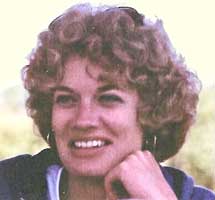As the number of students of color has increased in public schools across the country, school districts have welcomed more teachers of color into their faculties.
But teachers from minority groups still account for a small minority of teachers across the country – and an even smaller minority here in Connecticut.
According to a national study, only about 17 percent of U.S. public school teachers are persons of color although about 40 percent of students are from minority groups.
Connecticut lags the rest of the nation in the diversity of its teaching profession. Only about 7 percent of our public school teachers are persons of color, while 39 percent of students are from minority groups.
Experts say minority teachers are important for a number of reasons.
- Parents of minority children often feel more comfortable discussing school issues with a teacher of similar heritage.
- A diverse teacher population provides role models for all students.
- Research suggests that access to minority teachers may increase attendance, lead to higher test scores, and decrease the student suspensions.
A report by the Center for American Progress concluded:
- “Teachers of color serve as role models for students, giving them a clear and concrete sense of what diversity in education–and in our society–looks like.
- “A recent review of empirical studies shows that students of color do better on a variety of academic outcomes if they’re taught by teachers of color.”
How are we doing here in Connecticut? According to figures from the State Department of Education for the 2010-11 school year, 7.4 percent of teachers were persons of color. The breakdown was: Latino, 3.4 percent; African American, 3 percent; and Asian American, 1 percent.
In the six years from 2004-05 to 2010-11, the number of Latino teachers increased from 1,187 to 1,263 and Asian Americans increased from 262 to 389 while African American teachers decreased from 1,251 to 1,106.
Forty-four percent of the minority teachers were in six school districts, Bridgeport, Hartford, New Haven, New Britain, Norwalk and Stamford – districts with large percentages of minority students.
Thirty-nine school districts had no minority teachers at all.
Districts with the largest percentages of teachers of color were: Bloomfield, 25 percent; Hartford, 25 percent; Bridgeport, 24 percent; New Haven, 22 percent; Capitol Region Education Council, 18 percent; New Britain, 18 percent; Norwalk, 14 percent; Stamford, 14 percent; Waterbury, 12 percent; Danbury, 11 percent; East Hartford, 11 percent; and the Connecticut Technical School System, 11 percent.
Some districts with smaller percentages of minority students have made progress in recent years.
Congratulations to Greenwich, where minority teachers increased to 9 percent in 2010-11. The district increased the number of minority teachers from 57 to 61 from 2004-05 to 2010-11 although the total teaching staff decreased from 673 to 668 in the same period.
In Bristol, minority teachers increased from less than 4 percent to 6 percent although the total staff decreased from 545 to 516 in the same six-year period.
What happened in West Hartford? The teaching staff grew from 654 in 2004-05 to 666 in 2010-11. At the same time, the number of Latino teachers decreased from 18 to 14 and African American teachers decreased from 18 to 10, while the number of Asian American teachers increased from 6 to 10. The overall percentage of minority teachers fell from about 6.5 percent to 5 percent in that period.
At the Alma Exley Scholarship Program, we believe it’s important to call attention to the need for more teachers of color in public schools in Connecticut and across the country.
We’re focused on encouraging greater diversity in the teaching profession by providing financial support, recognition and encouragement to outstanding students of color.
It has been most gratifying for those of us involved in the program to have played a small part in launching the careers of many gifted and dedicated educators over the past 16 years. Our distinguished recipients are making a difference in schools across Connecticut and from Boston to Los Angeles.
– Woody Exley
